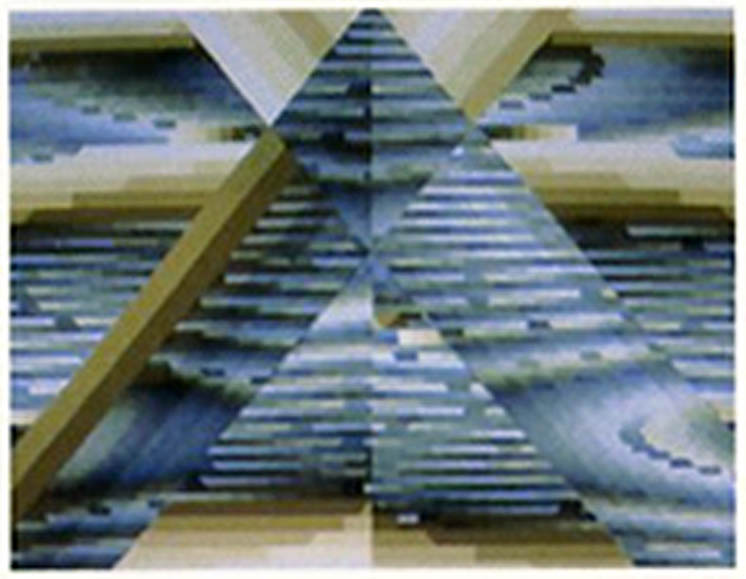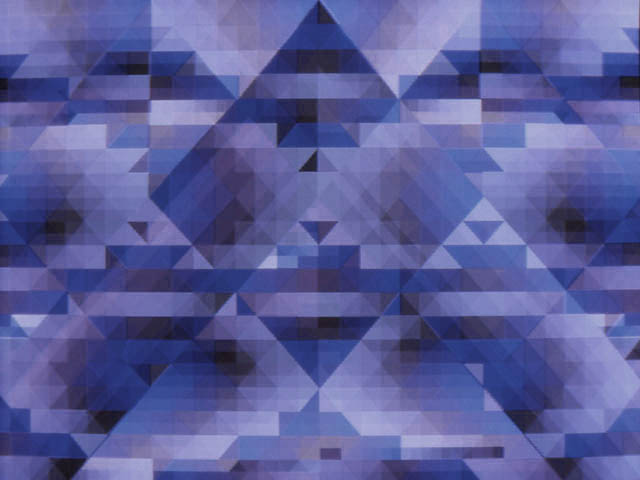Chromas 2 3
Computer Art
Edward Zajec sees his work not only in the narrow perspective of exploring the computer as an image generator, but also in the wider context of the expanded communication possibilities deriving from the interaction of art and technology. His ideas and techniques are concerned with the fluid articulation of colour and form in time.
The focus is not on the choreography of forms in motion (animation), but rather on those transitional states where dimensions interpenetrate, motifs dissolve into patterns and the geometric blends with the organic. Zajec aims beyond even this in trying to formulate some codes for a hypothetical language of light and sound (Orphics).
In a work called Chromas, crossed rays dissolve into one of several possible derivatives while modulating from a siena/cobalt to an ultramarine/green tonality. The actual unfolding of the images is based on the rhythms and sounds of a composition for piano by the contemporary Italian composer Giampaolo Coral.
Chromas is an attempt to develop and manipulate an aural theme in terms of colour and form. Thus the formative principle behind this development is not shape animation but thematic transformation.
Frank Popper
From the book:'Art in the Electronic Age', Harry Abrams Inc., New York, pp. 85-86

Chromas1, 1987, Music Giampaolo Coral: Seconda Sonata, Piano: Corrado Gulin, Hardware:Zenith ZF-42 with a 11108 #9 Revolution Graphics Card, Software: Pascal, HALO gl

